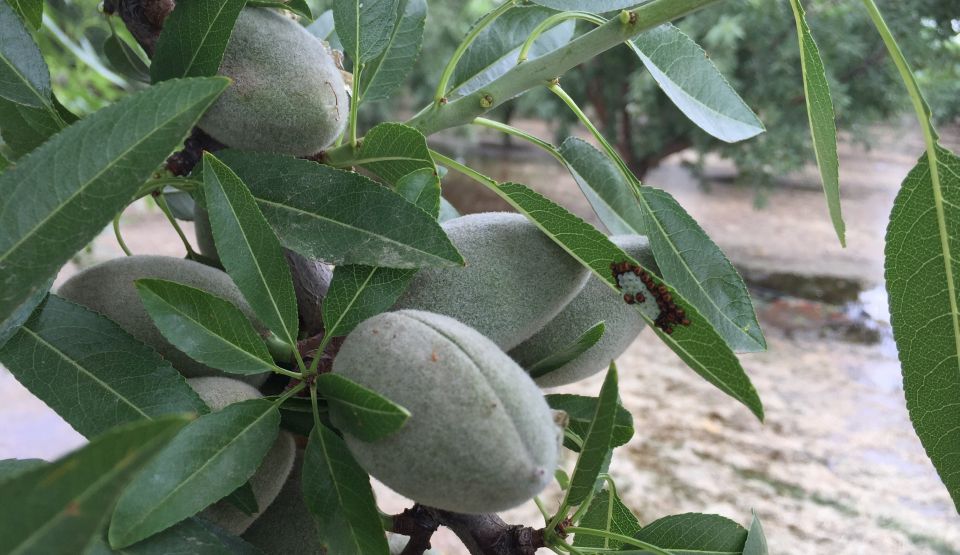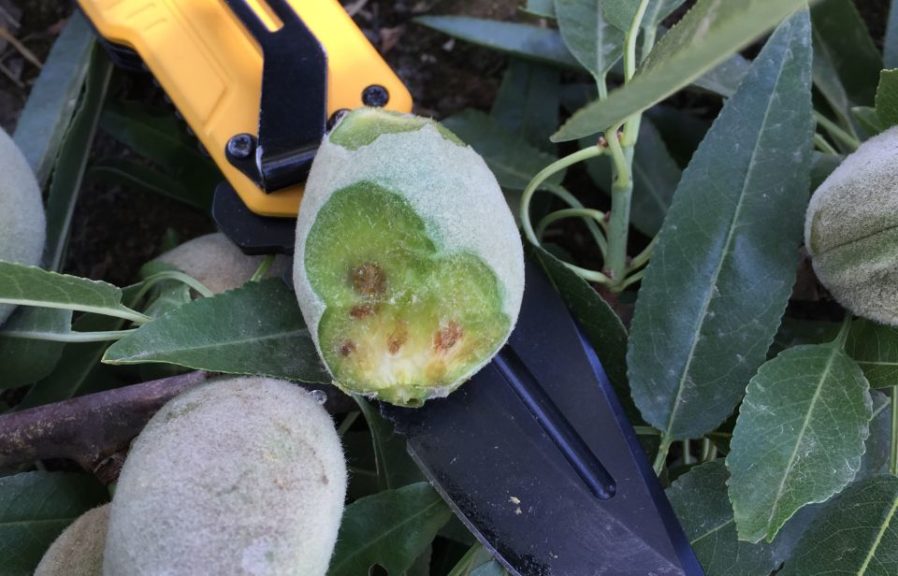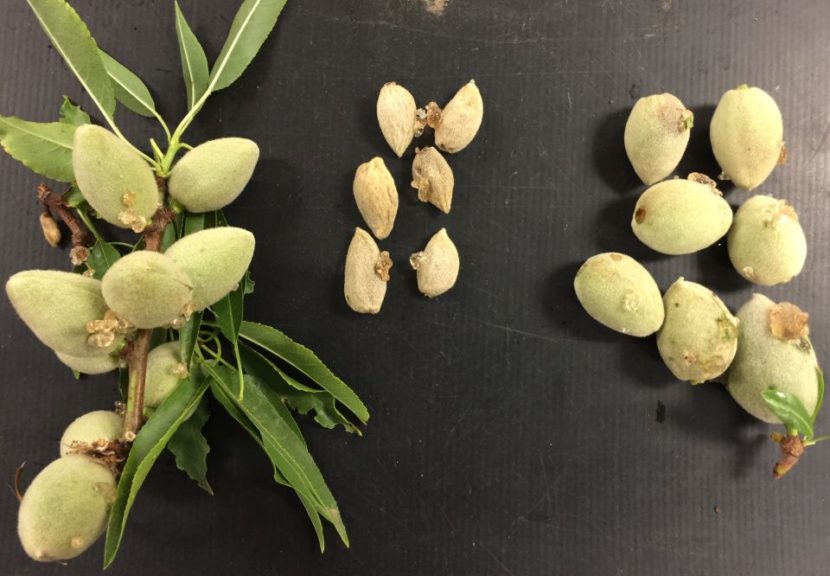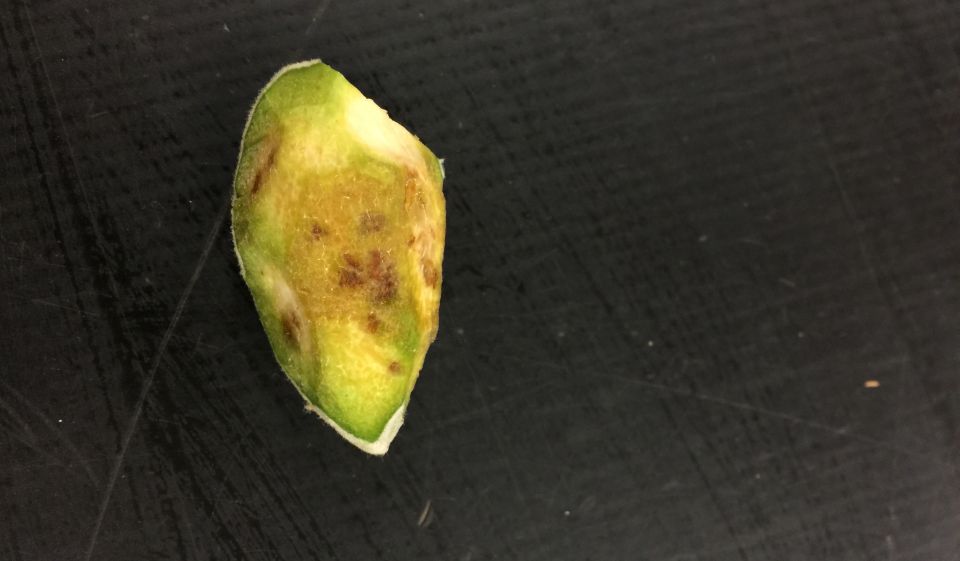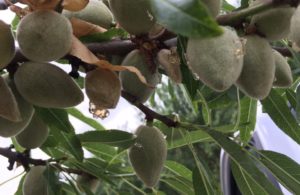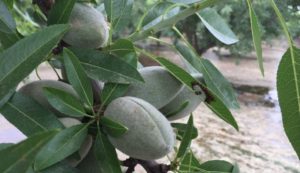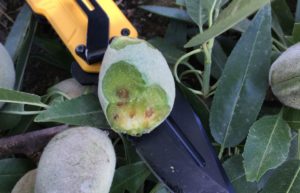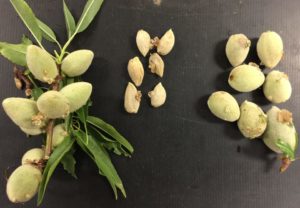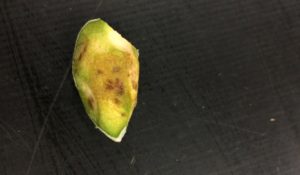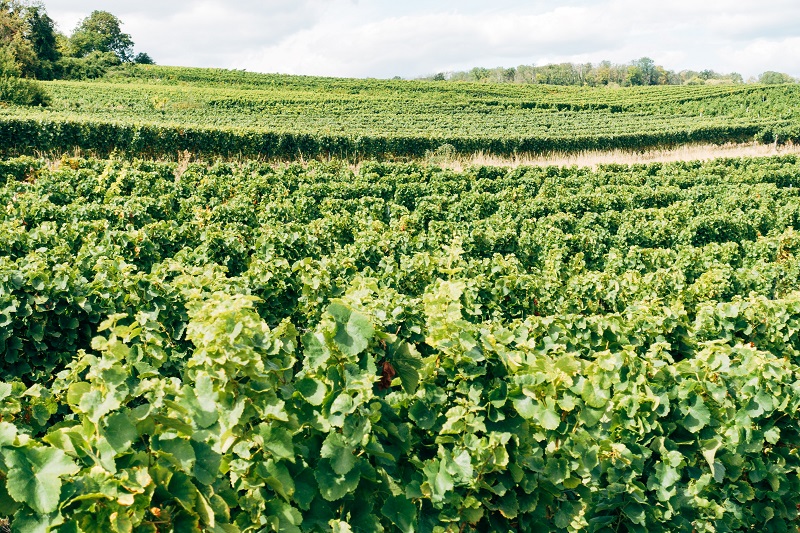Stink Bug Threatens High-Dollar Crops in California
Brown marmorated stink bug (BMSB) has now moved into almonds.
The feared pest was first reported in California in 2002, and a large find was announced in Sacramento, in 2013. However, the finds were confined to urban areas and overwintering sites. Adults of the pest have officially been found in 29 counties including Butte, Sacramento, San Joaquin, Santa Clara, Los Angeles, Siskiyou, and Stanislaus while reproducing populations have been found in 9 counties.Since then, it’s been wait-and-see for fruit growers in the state as it seemed like only a matter of time before the hitchhiking bug would discover the state’s abundant variety of fruit, including peaches, a particular favorite of the pest. Its movement each year inched closer and closer to agricultural production.
Well, that time has come as BMSB was found by a peach grower in his home near a peach orchard in fall 2015, and subsequent seasonal surveys in 2016 in peach orchards confirmed the abundance of BMSB in the Northern San Joaquin Valley. This year BMSB has been reported in almond orchards as well.
“The first finding was in 2016 in peaches and this year in almonds we found them around mid-June,” says Jhalendra Rijal, University of California Cooperative Extension Area IPM Advisor for San Joaquin, Stanislaus, and Merced counties. “We found adult, nymph, and egg masses in almond trees in one orchard. We also caught several adults and one nymph from a second almond orchard that we are monitoring this year.”
Feeding Habits Unclear
What makes this find interesting is not much is known about the potential impact BMSB will have on almonds, walnuts, or pistachios. What also complicates some of the scouting and alerting from growers is that damage, indicated by the clear gumming on nuts, from BMSB often looks like leaffooted plant bug and other common stink bugs externally. However, the extent of the nut gumming and presence of internal necrotic lesions were more severe than that from the other plant and stink bugs.
“Obviously we know peach is one of the favorites,” he says. “So peach growers need to be more vigilant about potential infestation from the beginning of the season.”
For almonds, Rijal says damage looks very similar to how the pest feeds on young, green peaches, with necrotic black lesions on the hull. BMSB feeds on the outside of the hull, but it is unclear what other destruction is possible. In the almond orchard where BMSB was found, there was evidence that the pest can feed on the nut. However, he cautions growers not to panic. The sample size of data is too small to be conclusive. In that orchard, though, all life stages of the pest were found, which is something growers should be aware of.
“In some of the samples, I can see some evidence that they can penetrate to the nut and inside nut meat,” he says. “But at this point, I don’t have enough data. We don’t know yet the extent of damage they can do.”
The finds are definitely of concern to researchers and growers alike, given the pest’s history of spreading and damage in the Eastern U.S.
“It’s the first evidence, but that does not mean it isn’t in other areas,” Rijal says. “There are other places that people are reporting and sending in samples, so it means it is spreading.”
What Should You Do?
Rijal suggests growers notify their Cooperative Extension advisors of whatever findings you might have, obviously if you suspect damage from BMSB. Growers in counties where stink bugs have been found — especially in the Northern San Joaquin Valley — should be monitoring and trapping for BMSB the entire growing season as Rijal and his team are still learning how many generations of the pest will occur in one growing season in California.
He suggests growers use BMSB-specific lures in black pyramid traps and/orin sticky panel traps as part of the monitoring strategy.While BMSB looks similar to other stink bugs, there are a few tell-tale markings on BMSBs including white bands on antennae and legs as well as dark and light bands on the margins of the abdomen. Shoulders of BMSBs are more rounded than its lookalike stink bug counterparts. Presence of the white bands on antennae and legs are the best ways to distinguish BMSB nymphs from other nymphs. For any questions on identification, visit StopBMSB.org/stink-bug-basics/look-alike-insects/.
And it goes without saying that growers should also keep abreast of any insect population movement and counts as it is almost assumed BMSB will spread through the state — the question is just how quickly that will happen.
For now, Rijal says the populations are still low in agricultural areas, so much so that it’s too early to advise any protective sprays or thresholds. And, it’s unclear what products are labeled for BMSB use in California.
“Just focus on monitoring and keep your eyes open,” he advises. “Be vigilant and monitor and scout the population from the beginning of the season.”






